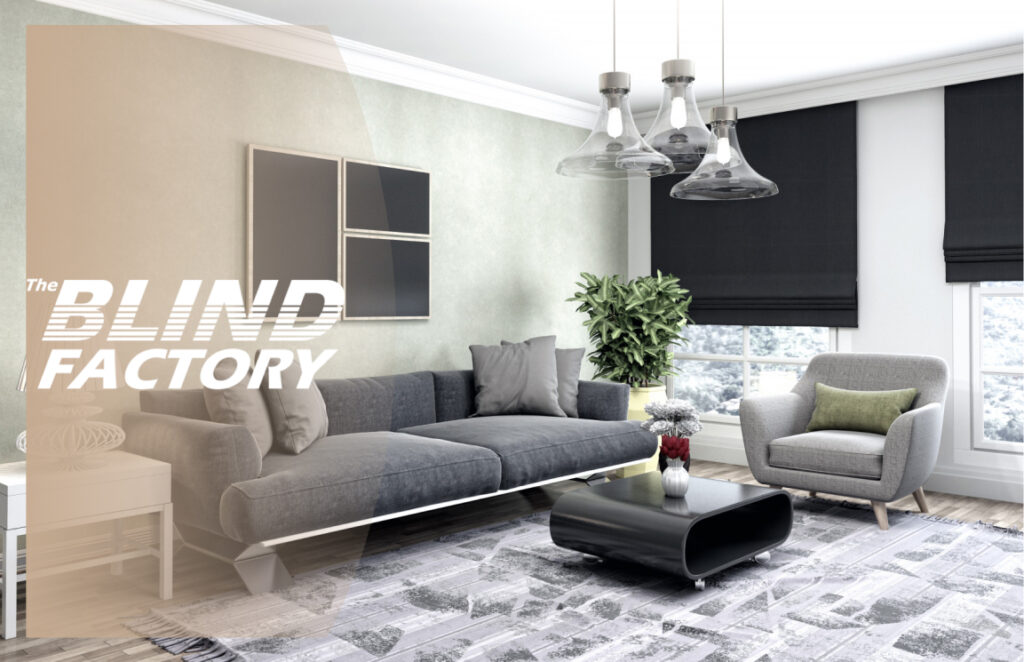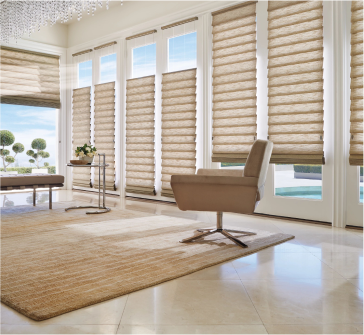Your windows are more than just lookways to the outside—they’re opportunities to showcase your home’s personality and enhance its functionality. Whether you’re starting fresh or updating existing window treatments, this comprehensive guide will help you navigate the essential elements of coordinating window treatments with your interior decor so every choice contributes to a cohesive and beautiful living space.
Know Your Space’s Style: The Foundation of Perfect Window Treatments
Before selecting window treatments, it’s crucial to identify your home’s design personality or what you want your style to be. Modern spaces gravitate toward clean lines and minimal ornamentation, making sleek roller blinds or simple panel curtains ideal choices. Traditional interiors welcome more elaborate treatments like pleated drapes with valances, while transitional spaces that blend both styles might benefit from tailored Roman shades or streamlined curtain panels with subtle details.
Take a thorough inventory of your existing décor elements, including paint colors, furniture styles, and patterns. Your window treatments should complement, not compete with, these elements. If your room features bold patterns in upholstery or rugs, consider solid window treatments that pull from the pattern’s color scheme.
Similarly, match the lines of your furniture—curved, traditional pieces pair well with swooping curtains, while angular, modern furniture calls for treatments with cleaner lines.
Natural light plays a pivotal role in your space and should influence your window treatment choices. Consider your room’s exposure—east-facing rooms need adjustable treatments for bright mornings, while west-facing spaces require options that can block harsh afternoon glare. Factor in both practical needs (UV protection, privacy, and energy efficiency) and aesthetic goals when making your final selection. Options like top-down/bottom-up shades offer excellent flexibility, allowing natural light while maintaining privacy.

Essential Elements to Consider When Coordinating
Understanding the interplay of design elements is crucial when selecting window treatments that enhance your space. Think of these elements as puzzle pieces—each contributes to the overall picture, but they need to work together seamlessly.
Color sets the foundation for your design choices. Rather than exact matches, look for window treatments that complement your existing palette. If your room features a deep blue sofa with brass accents, consider treatments in harmonious ivory or soft gold that pull from these tones. Professional designers often rely on the 60-30-10 rule: Your dominant color occupies 60% of the space, a secondary color takes up 30%, and accent colors—which might include your window treatments—comprise the remaining 10%.
Pattern mixing requires a thoughtful approach to scale and repetition. When incorporating patterned window treatments, balance them with your existing décor. Pair large-scale patterns with smaller ones or mix geometrics with florals while keeping a consistent color story. If your room already features bold patterns in upholstery or rugs, consider window treatments with subtle patterns or solid fabrics that provide visual rest.
Texture brings depth and interest to your space through tactile variety. Combine different materials thoughtfully—smooth with rough, matte with lustrous—to create dynamic contrast. For instance, pair sleek furniture with soft, woven window treatments or complement plush upholstery with tailored panels in crisp linen. Remember that texture can also affect how light plays in your space, from the gentle filtering of sheer fabrics to the distinct shadows cast by woven woods.
Scale and proportion ensure your window treatments feel appropriate for your space. When making selections, consider both the window and room size. For standard-height rooms, hang curtains 4-6 inches above window frames, while in rooms with high ceilings, you might extend them higher to emphasize vertical space. The width of your treatments should allow windows to open fully while maintaining proper fullness when closed—generally 2.5 to 3 times the window’s width for curtains.
By incorporating Pantone’s color of the year, mocha mousse, into well- proportioned drapery or roman shades, you can create a balanced, stylish look that enhances both color and form.

Window Treatment Options and Their Design Impact
Each window treatment option brings its own unique character to a space, offering distinct combinations of style and functionality.
Let’s explore how different treatments can transform your rooms.
Draperies and Curtains
Draperies remain the most versatile window treatments, offering endless possibilities for customization. Floor-length drapes, particularly when mounted close to the ceiling, create a sense of drama and height.
Consider these popular styles:
- Ripple-fold panels for modern, clean lines
- Pinch-pleated drapes for traditional elegance
- Sheer curtains for soft, filtered light
- Blackout drapes for complete light control
Blinds
Blinds combine practicality with clean lines, making them perfect for various design styles. Modern options offer improved functionality and aesthetics.
- Horizontal blinds: Available in wood, faux wood, or aluminum, ideal for most windows
- Vertical blinds: Perfect for sliding doors and large windows, now available in wider, more contemporary slats
- Cellular blinds: Energy-efficient with distinctive honeycomb chambers that trap air
Shades
Shades offer some of the most innovative solutions for modern homes while maintaining style.
- Roman shades: Create elegant folds when raised, perfect for traditional or transitional spaces
- Roller shades: Provide minimalist appeal with excellent UV protection
- Solar shades: Allow views while reducing glare
- Cellular shades: Available in top-down/bottom-up configurations for maximum flexibility
Shutters
The timeless appeal of shutters adds architectural interest and value to any home.
Plantation shutters with wide louvers offer classic elegance and superior light control, while café-style shutters provide a charming solution for spaces needing partial coverage. Full-height shutters deliver maximum privacy and a sophisticated look that becomes part of your home’s architecture. For areas with high moisture, composite shutters offer durability without sacrificing style.
Layering Combinations
Creating depth through layered window treatments is an art that can elevate your space dramatically. Pairing sheer curtains with blackout roller shades offers ultimate light control while maintaining elegance. Woven wood shades topped with decorative side panels create rich textural interest while combining Roman shades with cascading drapes adds traditional sophistication. For maximum insulation without sacrificing style, consider pairing cellular shades with flowing curtain panels.
The key is making sure each layer serves both a functional and aesthetic purpose while maintaining balanced proportions.
Room-by-Room Coordination Guide
Every room in your home serves a unique purpose, and your window treatments should reflect these distinct needs while maintaining overall design cohesion.
Living Room Treatment Strategies
The living room often features the most prominent windows in your home and requires treatments that balance style with functionality. To transition from day to night, consider layering sheer curtains underneath heavier drapes. Mount your curtain rods high and wide to maximize natural light and create the illusion of larger windows.
For rooms with multiple windows, maintain consistency in treatment style but consider subtle variations in texture or pattern to add interest without chaos.
Bedroom Window Styling
Your bedroom sanctuary demands window treatments that master light control while adding softness to the space. Blackout curtains or cellular shades provide essential darkness for quality sleep while still looking elegant when open. Install treatments with smooth, quiet operation to prevent disruption during late-night or early-morning adjustments.
For a luxurious touch, layer blackout shades under decorative side panels, allowing you to adjust light levels while maintaining style.
Kitchen Window Considerations
Kitchen windows demand practical solutions that resist moisture, heat, and cooking splatters while complementing your cabinetry and countertops. Opt for easy-to-clean materials like composite shutters or vinyl blinds in neutral tones that coordinate with your backsplash.
For sink windows, consider top-down/bottom-up shades that maintain privacy while allowing natural light. Roman shades in water-resistant fabrics offer a softer alternative that can be raised during active cooking times.
Bathroom Privacy Solutions
In bathrooms, privacy takes precedence, while style remains important. Frosted window films paired with simple Roman shades provide complete privacy without sacrificing natural light. If you want a spa-like atmosphere, consider water-resistant woven wood shades or vinyl shutters that resist humidity while adding natural texture. Top-down/bottom-up cellular shades offer flexibility in private areas—lower the top to let in light while keeping the bottom closed for privacy.
Dining Room Elegance
The dining room calls for sophisticated treatments that frame meals and gatherings with grace. Elegant side panels flanking Roman shades create a formal atmosphere perfect for entertaining. Consider light-filtering fabrics that soften natural light without blocking it entirely, creating an ambient glow for everyday meals and special occasions alike.
If your dining room faces a beautiful view, choose treatments that frame rather than obstruct it, perhaps using stationary panels to add softness while leaving the central window space clear.
Related Article: How to Choose Window Treatments Based on Room Functionality

Common Coordination Challenges and Solutions
Even the most well-planned spaces can present window treatment challenges. Here’s how to address common design dilemmas while maintaining both style and function.
Working with Unusual Window Shapes
Architectural windows add character but require thoughtful treatment solutions. Arched windows benefit from custom-fitted cellular shades that preserve their elegant shape, while stationary panels can highlight their unique design.
For hard-to-reach skylights and trapezoid windows, motorized blinds and shades offer both practicality and style. Bay windows work best when each section receives individual treatment while maintaining visual continuity through consistent materials and colors.
Coordinating Multiple Windows in One Room
When managing several windows in a single space, balance is essential. Treat each window as part of a cohesive design story while addressing its specific needs. For rooms with mixed window sizes, use similar treatments scaled appropriately to each window’s dimensions. Consider maintaining the same color palette while subtly varying textures or opacities to create visual interest without disrupting harmony.
Balancing Privacy and Style
Privacy solutions don’t require sacrificing aesthetics. Layer sheer curtains with decorative panels to maintain style while controlling visibility. Top-down/bottom-up shades offer excellent flexibility for street-level windows, allowing natural light through the top while creating privacy below. In modern spaces, solar shades can preserve views while reducing glare and maintaining daytime privacy.
For ultimate discretion in bathrooms or bedrooms, combine frosted window films with decorative treatments.
Dealing with Competing Patterns
When your room features bold patterns in existing décor, window treatments require strategic selection. Create a visual hierarchy by choosing one dominant pattern and supporting it with subtle textural elements or solid colors. If mixing patterns, maintain cohesion by selecting designs with similar color values but different scales – perhaps pairing a large-scale floral with a small-scale geometric in complementary tones.
Sometimes, the most effective solution is choosing solid treatments in color pulled from your room’s existing patterns, creating a connection without competition.
The Art of Window Treatment Design
Your window treatments are more than just functional elements—they’re the finishing touches that bring your entire design vision together. By understanding your space’s style, considering essential design elements, and thoughtfully selecting treatments for each room, you can create a cohesive look that enhances your home’s natural beauty.
Whether you’re dealing with challenging architectural features or coordinating multiple windows, remember that successful window treatments balance both practical needs and aesthetic goals, turning every window into an opportunity to showcase your personal style.

